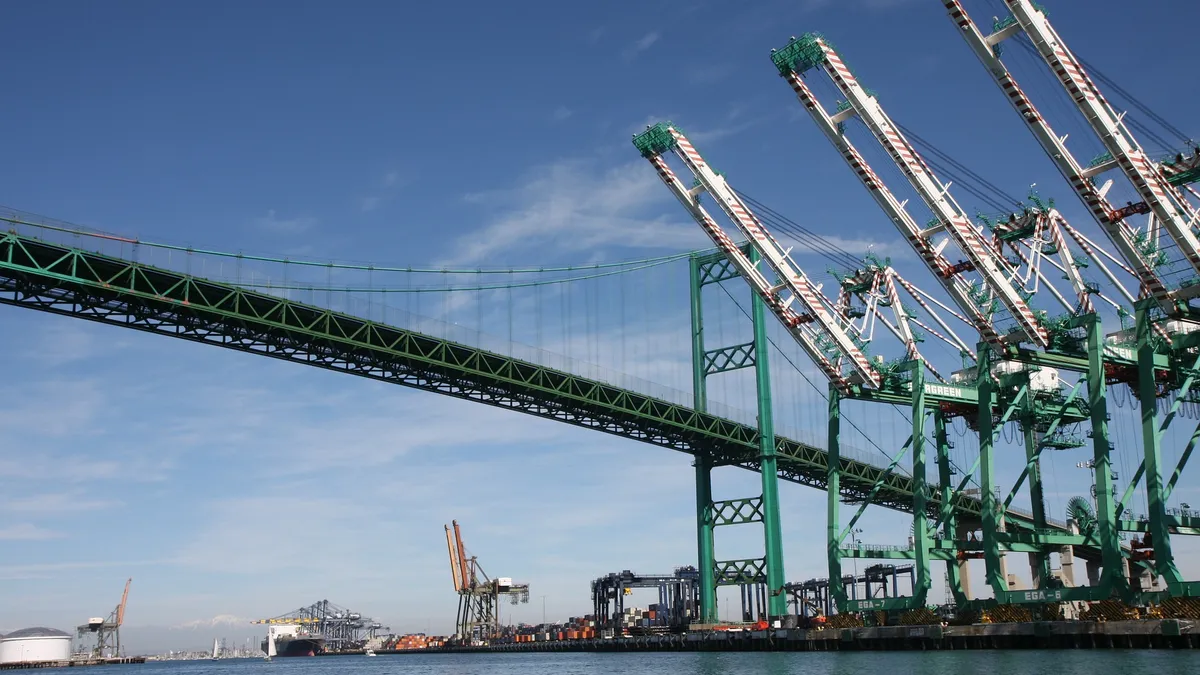Dive Brief:
- The Port of Long Beach announced a 16.5% rise in container volumes this April, due to new customers Hyundai Merchant Marine, SM Line and adjustments to maritime alliance networks.
- However, the full effect of changes to shipping line alliances is yet to be seen as the port's partner in Los Angeles has yet to report volumes, and new vessels did not begin calling until late April, according to various reports.
- In fact, greater volumes may also lead to increased congestion at the port, according to JOC.com, as has happened in China with the ports most called upon by the new alliances struggled to keep up.
Dive Insight:
A month after the new ocean alliances took shape, the effects are beginning to take form and ports on both coasts are preparing for both new volume opportunities and potential repercussions.
The National Retail Federation announced retail ports like Los Angeles/Long Beach, Oakland, Seattle-Tacoma, New York/New Jersey, Charleston and Savannah should expect an influx of business in the coming months. Through their Global Port Tracker, the association notes April saw an 8.3% increase to 1.56 million TEUs, with the next four months averaging at a 2.84% growth rate.
The growth is correlated with increased consumption of retail goods, whether in store or online, per the NRF. However, the rise in volumes is not split evenly among U.S. ports, nor is it necessarily correlated with more vessels.
Rather, as carriers consolidate and operate larger ships, they have also cut down on their preferred ports of calls, leaving supply chain stakeholders from shippers to rail operators to terminals with little choice but to acquiesce.
"Bigger ships create well documented pressures for ports in terms of the need for deeper water, larger cranes and longer berths," Drewry Senior Analyst Neil Davidson writes in a paper for The Journal of Ports & Terminals. In addition, the vessels bring in and take away more cargo in one go, increasing the pressure on upstream shippers to acquiesce to more restrictive timelines, he notes. "At the same time, this lumpiness reduces the options that the alliances have in terms of available ports and terminals that can accommodate them."
The Port of Long Beach may be a beneficiary of these changes, but it remains to be seen how — once networks are fully deployed — the port, and others in similar waters, will adapt to these changes. Already, mega-ports have a history of terminal and roadside congestion.
One contrary factor may be a rerouting of cargo to the newly-expanded East Coast ports, but the ports have made it clear they intend to compete for business. Of course, all options will first have to prove they can handle the big ship era and avoid downstream ripple effects.













